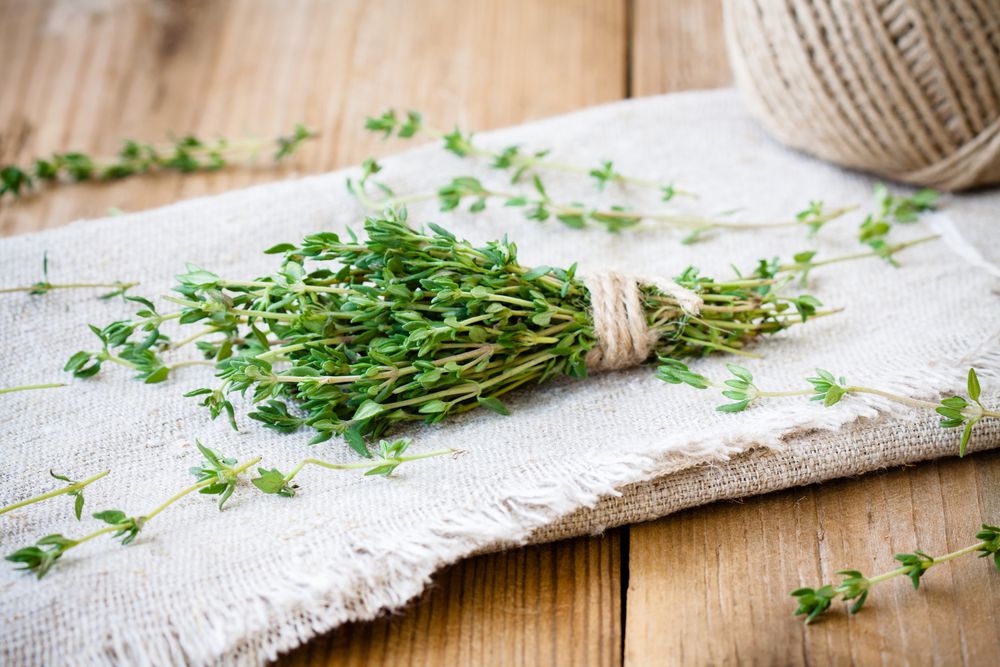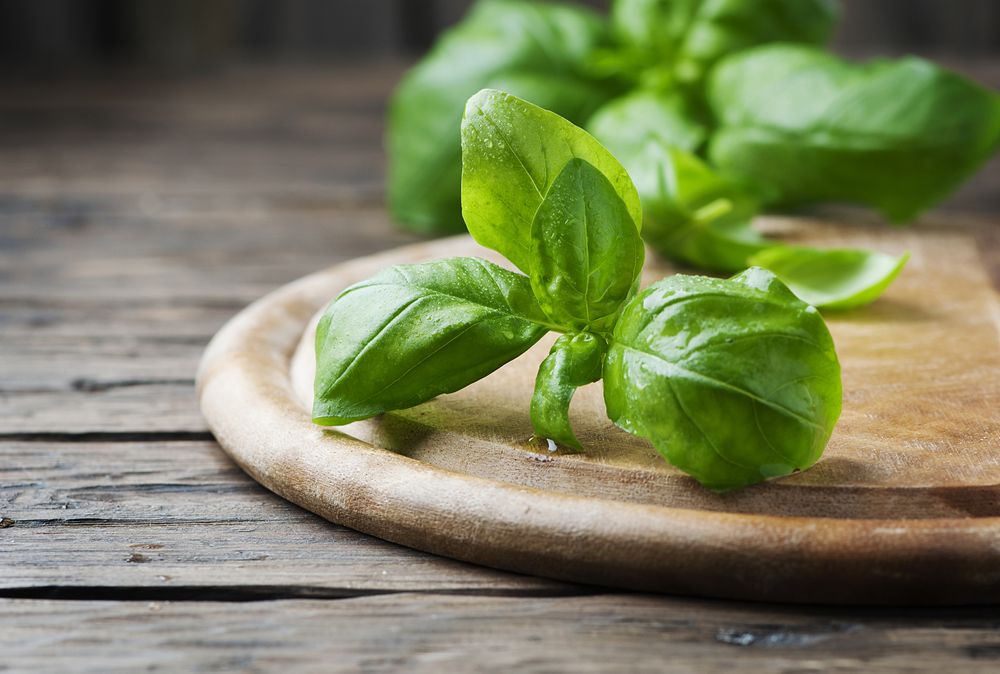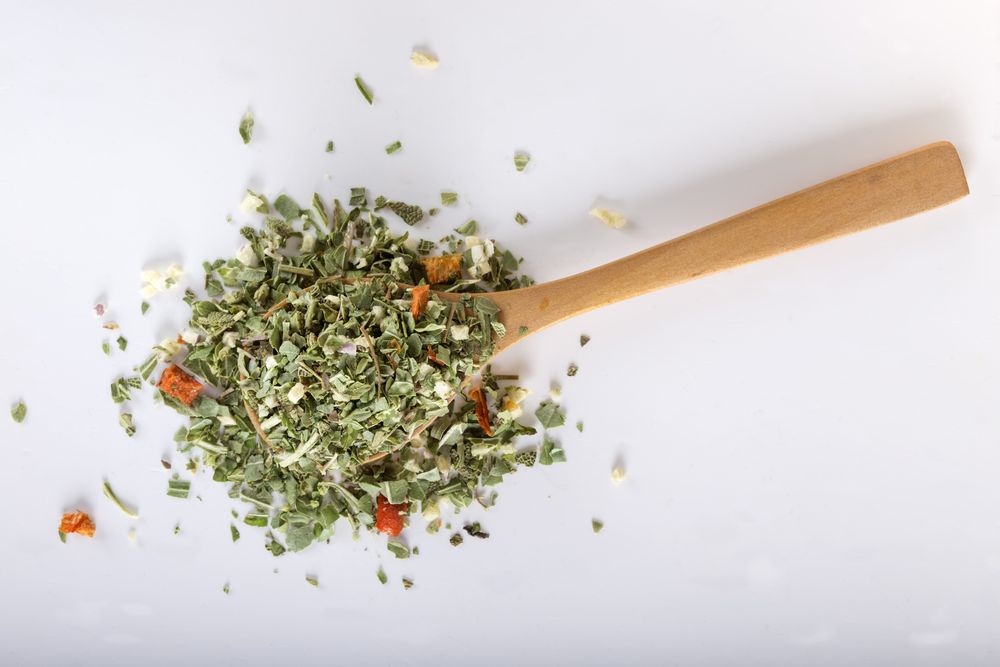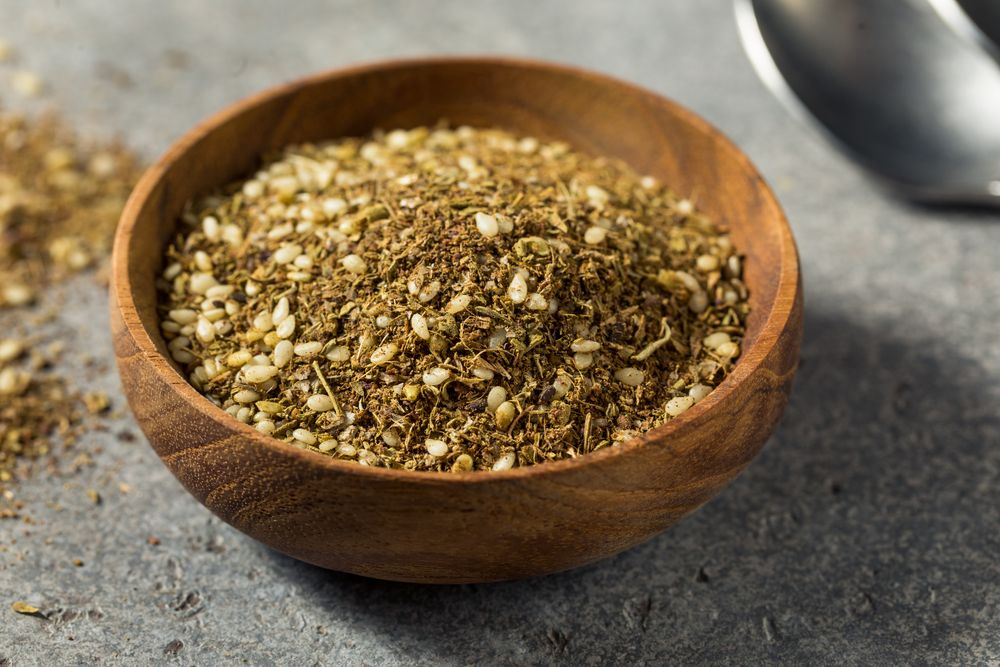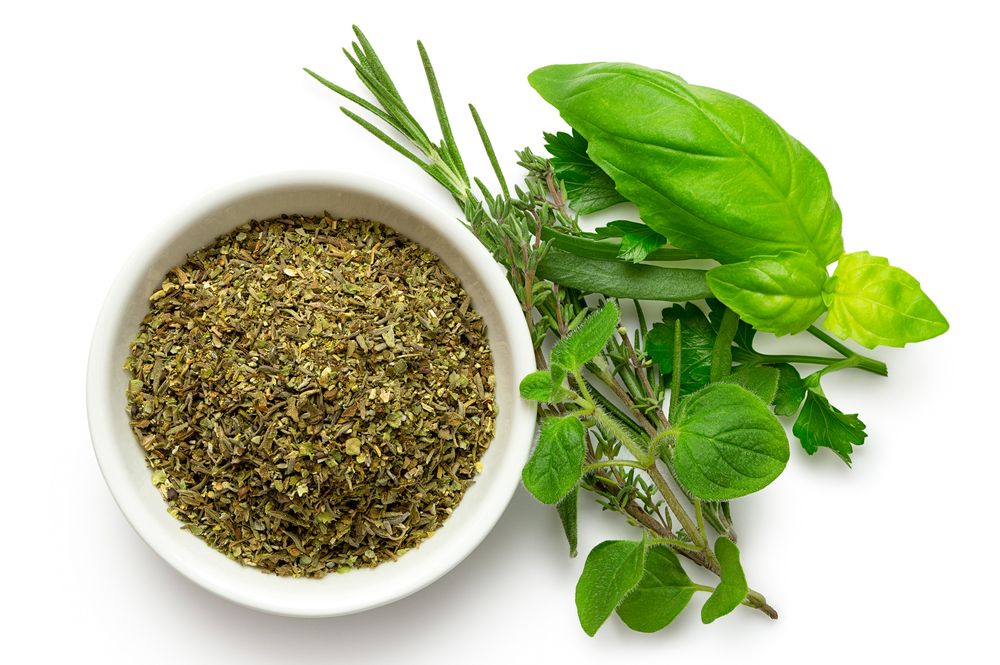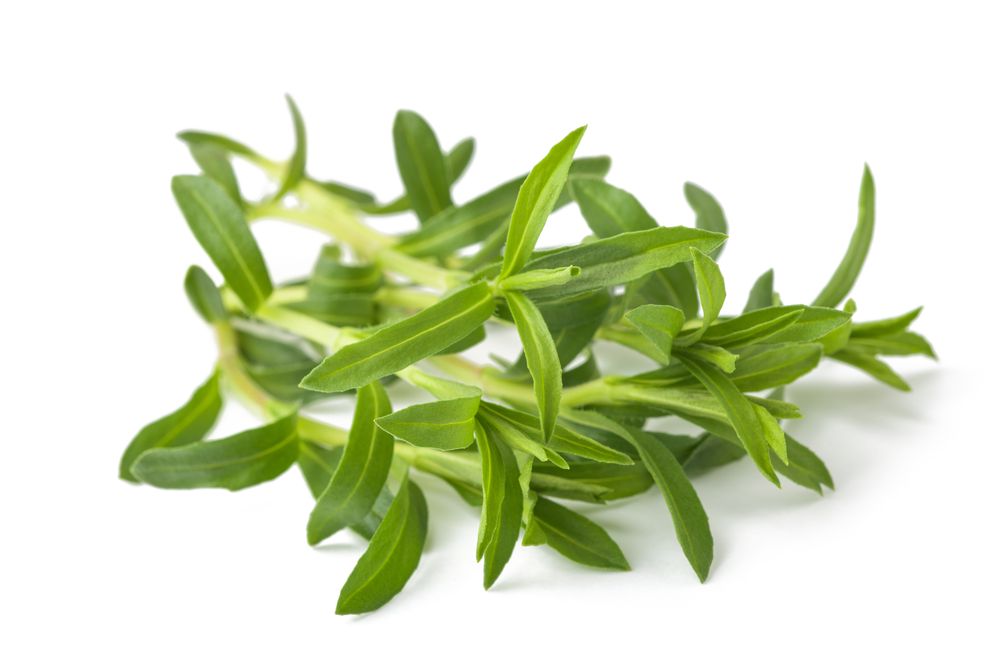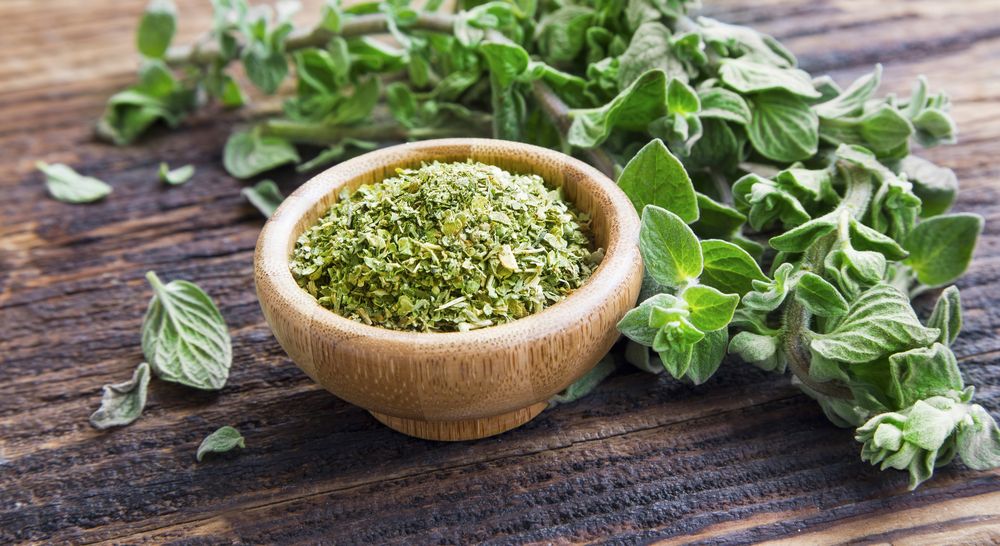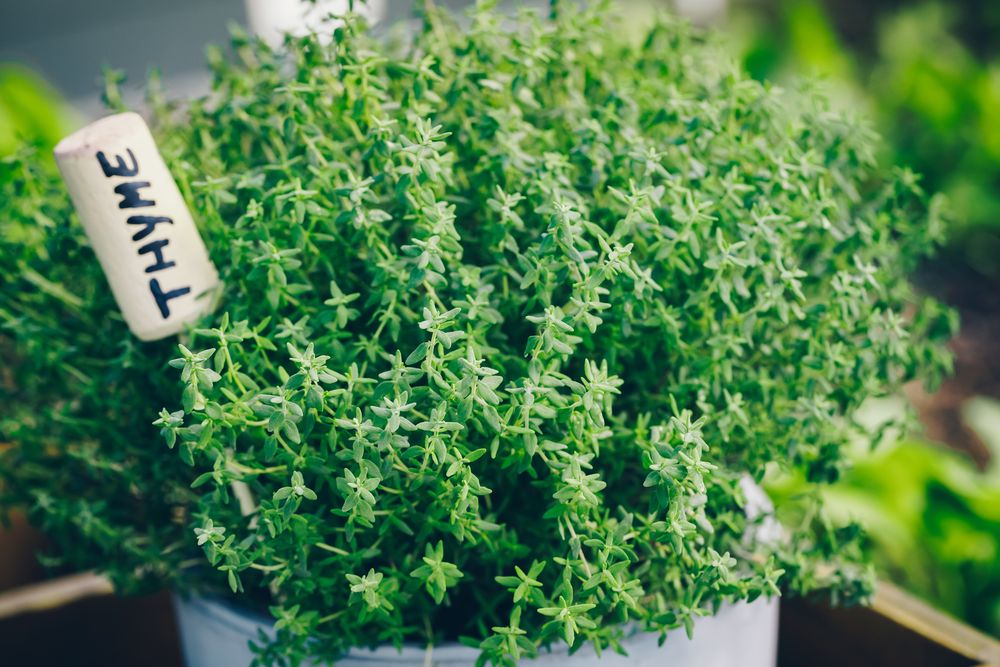The Best Substitutes for Thyme (Fresh & Dried) + Recipes
Ran out of thyme? We’ve researched what’s the best substitute for thyme, be it fresh or dried thyme.
But, let us first understand what thyme is, how you can use it, and what options you have to replace it.
Table of Contents
What Is Thyme and How to Cook With It
Thyme, scientifically known as Thymus vulgaris, belongs to the mint family (Lamiaceae). It is a herb that comes from the Mediterranean region. Other herbs that belong to the mint family include mint, shiso, oregano, basil, rosemary, savory, etc.
Like its relative rosemary, this woody herb can withstand high temperatures and cook for long periods, making it ideal for stews and sauces. Thyme is added to dry herb blends worldwide and makes up one of the herbs in bouquet garni.
Thyme Varieties
There are over 350 varieties of thyme. Three of these varieties — Common, French, and lemon thyme — are most commonly used for culinary purposes. Each type has its unique appearance, aroma, and flavor.
- Common thyme has a woody, minty flavor with a hint of lemon. It works well for meats, stews, soups, sauces, and flavored stuffings.
- French thyme is a variant of common thyme which grows in France. It works well in French and Mediterranean cuisines.
- Lemon Thyme is similar to common thyme but has a strong citrus scent and flavor. It pairs well with meats and seafood. It also adds flavor to soups, sauces, marinades, and stews.
What Does Thyme Taste Like?
In general, it has an earthy, slightly sweet, and savory flavor with a hint of citrus and mint. Lemon thyme has a more citrusy flavor, and the French variant has the same earthy taste of common thyme, but with a much sweeter flavor.
What Does Thyme Look Like?
Each thyme variant has its distinct appearance. For example, the more common type has rounded leaves that grow in groups on a woody stem.
Lemon thyme closely resembles common thyme, except it has white edges around the leaves. The French variant has more pointed, narrower, and green-gray leaves.
Caraway thyme, another thyme variety that works best with lamb and bread, has dark green leaves, pink flowers, and a red stem.
Simple Substitutes for Thyme
1. Oregano (Fresh and Dried)
Oregano belongs to the same mint family, and it has a similar flavor. These make it an excellent substitute for thyme. You can use both the fresh and dried versions as thyme replacements.
Oregano’s taste is more intense, so you should use ¾ teaspoon of oregano instead of one teaspoon of thyme.
Oregano works well in many Italian dishes, grilled lamb, pork, chicken, cheese, salad dressings, and gravies. Try it out in this keto pork chop with mushroom gravy recipe.
2. Marjoram (Dried)
Marjoram is closely related to oregano and also belongs to the mint family. It has a fresh, woody flavor with sweet and citrus undertones. It is milder than oregano and has a similar taste profile as thyme, so it works well as a thyme substitute.
You can add dried marjoram to meat dishes and tomato-based recipes such as tomato sauce. You can also pair it with vegetables. Dry marjoram is a popular ingredient in seasoning mixes like poultry seasoning and French Herb de Provence. These seasoning mixes are also thyme replacements.
Fresh marjoram works best as a finishing herb – used on a finished dish- to preserve its flavor.
3. Rosemary (Fresh and Dried)
Rosemary is an aromatic herb that also comes from the same Lamiaceae family. It has a unique woody flavor with tones of pepper, lavender, citrus, evergreen, mint, and sage. It packs more flavor so, use it in moderation as a substitute for thyme.
Rosemary can withstand plenty of heat and becomes more flavorful when cooked for longer in liquid. For this reason, use it at the start of stews and braises.
It also works well in sauces such as this creamy rosemary garlic sauce added to spaghetti squash casserole, lamb chops, poultry recipes like the herb-roasted turkey breast made by the Food Network, and vegetables in Gordon Ramsay’s root roasted vegetables with rosemary recipe.
4. Italian Seasoning (Dried)
Italian seasoning is a dried blend of five core herbs, namely:
- dried oregano
- dried rosemary
- dried thyme
- dried basil
- dried marjoram
Some variations include dried sage and dried chili flakes. The dried herb blend adds an Italian flair to dishes.
You can use it as a thyme substitute because it does contain a bit of thyme. Most grocery stores stock it, but if you love making homemade versions of everything- and we know you do- you can use this DIY Italian Seasoning recipe.
It adds flavor to salad dressings, pasta dishes, soups, marinades, and pizza. Give it a try in these recipes:
- Spaghetti Squash Alfredo
- Grilled Pasta Salad
- Keto Cauliflower Rice
- Vegan Zucchini Pizza Bites
- Mushroom Meatballs with Black Bean and Pasta
- Winter Vegetable Soup
5. Parsley and Marjoram (Dried)
Parsley comes from the Apiaceae or parsley family. It has a herby and slightly bitter taste. It works similar to lemon zest by contrasting with other flavors in dishes.
For instance, when combined with marjoram, which has a woody and slightly sweet and citrus flavor, the combined taste simulates thyme’s flavor profile.
Use one teaspoon of marjoram and half a teaspoon of parsley to substitute one teaspoon of thyme in any recipe.
6. Summer Savory (Fresh and Dried)
Savory is an ancient herb once used as a natural aphrodisiac by ancient Romans. So aromatic was its smell that they also used it to make love potions.
Savory belongs to the same Lamiaceae family as marjoram, oregano, and mint. It is no surprise that it has a hint of the flavor of thyme, marjoram, and oregano. This makes it an ideal substitute for thyme, as well as for marjoram and oregano.
This herb comes in two varieties: Winter and summer savory; though the summer variety is more common. The summer savory has a spicy-sweet aroma and a hot, peppery flavor. It goes well with poultry meats, pork, lamb, fish, eggs, vegetables, and beans. Use it when grilling meats, baking pies, and even flavoring condiments used in salads, soups, and sauces.
Swap fresh summer savory with fresh thyme in a 1:1 ratio. Use the same ratio for dried savory.
7. Herbes de Provence (Dried)
Herbes de Provence is an aromatic blend of herbs from the Provence region in France. Traditionally, it added flavor to vegetables, cheese, fresh meats, and eggs in French Provençal cuisine. Nowadays, it is still used in French cuisine and works well with Mediterranean dishes.
It consists of thyme, bay leaf, tarragon, savory, oregano, rosemary, marjoram, oregano, and bay leaf. Some recent variations include lavender. It is available in most grocery stores, but we like to make our Herbes de Provence at home as often as possible.
The herb blend is an excellent substitute for thyme because it is one of its core herbs. Add a little at a time to balance all those flavors.
8. Za’atar Seasoning (Dried)
Za’atar seasoning is another aromatic herb and spice blend with its origins in the Middle East. Traditionally, it consisted of ground za’atar, dried sumac, toasted sesame seeds, and salt. Nowadays, Za’atar thyme (grows wild) is hard to find as it is a protected herb; oregano or thyme is used in its place.
The seasoning is available prepackaged. However, you can make your own when you have some dried thyme or oregano to spare. It pairs well with meat, eggs, vegetables, bread, dairy products like yogurt and cheese.
The toasted sesame seeds and dried sumac impact the overall flavors of a recipe when using Za’atar seasoning as a substitute for thyme; add a bit at a time to create the perfect balance of flavors. The herb and spice blend also has plenty of salt. So, remember to reduce the amount of salt in your recipe.
9. Poultry Seasoning (Dried)
Poultry seasoning is a blend of herbs that adds flavor to poultry dishes. It works best in chicken, duck, and turkey. Its main ingredients are sage, thyme, marjoram, and rosemary. Nonetheless, some versions also include garlic, pepper, and nutmeg.
Try out poultry seasoning in this keto cornbread stuffing with sausage.
10. Tarragon (Dried)
Tarragon comes from the sunflower family. It is used more commonly in French cuisine. It has a bittersweet taste similar to fennel seeds, which is different from thyme’s flavor. However, it pairs well with fish, chicken, lamb, and egg. It also goes well with acidic flavors like vinegar so, it is suitable for salad dressings and marinades.
It best acts as a substitute for thyme when used in tiny quantities. Start with a pinch and add to taste.
11. Basil (Fresh)
Basil is another aromatic herb in the mint family and has over 60 varieties. It has a sweet and savory taste, with a hint of black pepper, mint, and anise. Dried basil has a dampened flavor, and we recommend that you use fresh basil instead. Use half the amount of thyme called for in the recipe.
Fresh basil is not a versatile replacement for thyme. However, it works well as a substitute in tomato-based recipes like tomato basil nut and seed crackers, keto chicken parmesan, and keto pizza chaffles.
Fresh Thyme vs. Dried Thyme
The woody herb is available in two forms: Fresh and Dried. In rare cases, you can also grind it to a fine powder. You can swap either version for the other in any recipe.
Below is a breakdown of how to substitute one type for the other. We have also included a recipe to make dry thyme.
How to Substitute Fresh Thyme for Dry Thyme?
Generally, replace fresh thyme for dried thyme using a 3:1 ratio. This translates to three teaspoons of fresh thyme for every teaspoon of dried thyme.
How to Substitute Fresh Thyme for Ground Thyme?
Replace fresh thyme for powdered thyme in a 4:1 ratio. This means that for every teaspoon of ground thyme, use four teaspoons of fresh thyme.
To summarize:
In any recipe, substitute ⅓ teaspoon of the dried thyme for one teaspoon fresh thyme. Also, you use ¼ teaspoon ground thyme for one teaspoon of fresh thyme.
If your recipe mentions sprigs instead of teaspoons, two average-sized sprigs, make about three teaspoons of fresh thyme. So use ⅓ teaspoons of the dried form instead of two sprigs. Please note the size of a sprig of the earthy herb is relative so, you may need to eyeball what is average.
How to Dry Fresh Thyme?
While you can buy dry thyme from your local grocery store, drying a few bunches is much better. If you choose to dry your thyme or any other herb naturally, you will have to wait for one to three weeks before the herbs dry fully.
Low-moisture herbs like those in the mint family dry best when hanged. Other drying options include using a dehydrator, freezing, or microwave drying. Follow the steps below to dry your fresh herb.
Air-Drying Instructions
- Inspect your fresh herb for bugs, seeds, or bruising on the leaves and stem. Remove these where possible.
- Wash the fresh thyme with water to remove any dirt or dust.
- Pat dry with a paper towel to remove any water between the leaves.
- Attach a string to the cut end of the stems. Bunch each fresh herb in a small cluster and hang to dry in a dry area with good air circulation.
- Cover the bunched herb with paper bags to prevent dust and dirt from falling on them as they air-dry. Punch holes on the bags to improve air circulation in the bag.
- Leave the bunches undisturbed for one to three weeks, but check on them occasionally. If within this period they crumble in your hands, they are dry.
- Gently crush the dry thyme leaves with your fingers or leave them whole. Whole dried leaves retain their flavor longer than dried crushed leaves.
- Store in an air-tight container in a cool and dry place.
Note: The dried version can last for up to a year if stored well.
How to Use Fresh Thyme
Have you noticed the term sprig in any of your recipes? The term sprig means one stem of the herb.
If you can bend the sprig with ease, it is still young, and you can chop the leaves and the stem to use in your recipe.
Mature thyme sprigs have less flexible stems; you need to separate the leaves from the stem. Remove the leaves by holding the top of the stem. Run your fingers down the length of the stem. The leaves should come off with ease.
What Is Thyme Good For?
Fresh and dry thyme offers different dishes, warm, sweet, and savory flavors. Both forms pair well with poultry, meat, mushrooms, fruits, pasta, and other vegetable dishes.
You can use them when frying, grilling, and baking. You can also make delicious soups, casseroles, stuffing, pasta, grilled vegetables and meats, salads, and desserts.
Fresh thyme becomes a grounding herb when added to sweet vegetables like carrots, onions, sweet potatoes, and winter squash. It balances out the sweetness from the vegetables with its earthy and woody flavors.
Try out these recipes:
Fresh Thyme Recipes
- Jerk Chicken
- Autumn Minestrone Soup
- Peach and Thyme-Infused Ice Tea
- Grilled Mushrooms
- Citrus-Thyme Macaroons
Dried Thyme Recipes
Substitute for Thyme (FAQ)
What Can I Substitute for Thyme?
You can substitute thyme with herbs like marjoram, oregano, savory, and rosemary. These herbs are in the same mint family as thyme. You can also combine dried marjoram and parsley for the same effect.
How Do I Substitute Fresh Thyme for Dried Thyme?
Use a 3:1 ratio when substituting fresh for dried thyme. So for every one teaspoon of dried thyme, use three teaspoons of fresh thyme. This rule applies to other fresh herbs like oregano, rosemary, dill.
What Can I substitute for Thyme in French Onion Soup?
If you do not have fresh thyme, you can substitute it with dried thyme or Herbes de Provence seasoning.
What Is a Thyme Substitute for Beef Recipes?
An excellent substitute for thyme in beef recipes is marjoram, parsley, or a combination of both.
What Is a Sprig of Thyme?
A sprig of thyme is one stem of fresh thyme. You have probably seen some recipes requesting you to use two sprigs of fresh thyme. This means you should use two stems of average-sized stems. Substitute two stems with ⅓ teaspoons of dried thyme or ¼ teaspoons of ground thyme.
Conclusion
There we have it! Our 11 best substitutes for thyme. Most of the thyme substitutes in this list come from herbs in the same mint family as thyme.
In summary, for the best results, use the following thyme replacements for the following dishes:
- Oregano – Italian dishes like pasta and pizza.
- Marjoram and Parsley – Meat and vegetable dishes.
- Tarragon – Chicken and fish dishes.
- Rosemary – Lamb, pork, and chicken recipes.
- Summer Savory – Pork, chicken, vegetables, salads, and sauces.
- Basil – Tomato-based recipes.
- Italian seasoning – Replace in recipes that need dried thyme.
- Herbes de Provence – Use it in French cuisine for meats, vegetables, cheese, eggs, and soups.
- Poultry Seasoning – Chicken, turkey, and duck recipes.
Did you like this post?
We would love to hear from you. Spare some thyme (pun intended) to leave a comment in the comment section.

